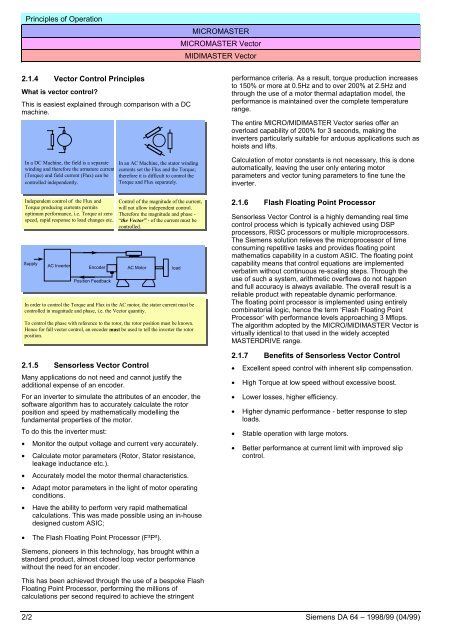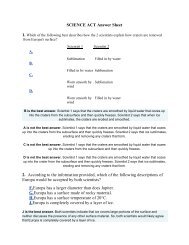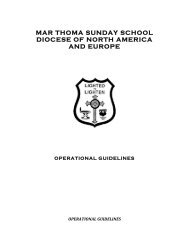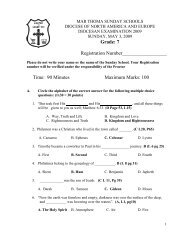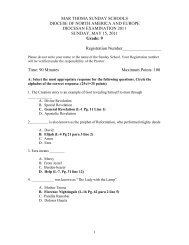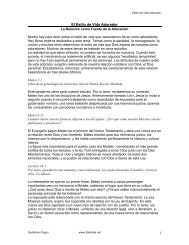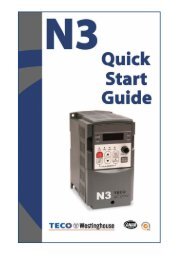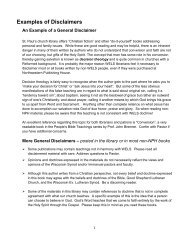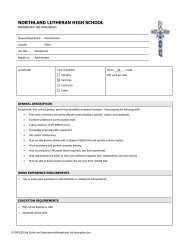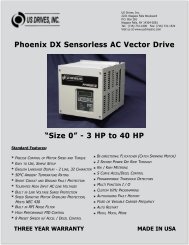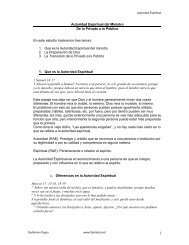MicroMaster 6SE92 - ECT Sales & Service
MicroMaster 6SE92 - ECT Sales & Service
MicroMaster 6SE92 - ECT Sales & Service
You also want an ePaper? Increase the reach of your titles
YUMPU automatically turns print PDFs into web optimized ePapers that Google loves.
Principles of OperationMICROMASTERMICROMASTER VectorMIDIMASTER Vector2.1.4 Vector Control PrinciplesWhat is vector control?This is easiest explained through comparison with a DCmachine.In a DC Machine, the field is a separatewinding and therefore the armature current(Torque) and field current (Flux) can becontrolled independently.Independent control of the Flux andTorque producing currents permitsoptimum performance, i.e. Torque at zerospeed, rapid response to load changes etc..SupplyAC InverterEncoderPosition FeedbackTh e ,In an AC Machine, the stator windingcurrents set the Flux and the Torque;therefore it is difficult to control theTorque and Flux separately.Control of the magnitude of the current,will not allow independent control.Therefore the magnitude and phase -“the Vector” - of the current must becontrolled.AC MotorIn order to control the Torque and Flux in the AC motor, the stator current must becontrolled in magnitude and phase, i.e. the Vector quantity.To control the phase with reference to the rotor, the rotor position must be known.Hence for full vector control, an encoder must be used to tell the inverter the rotorposition.2.1.5 Sensorless Vector ControlMany applications do not need and cannot justify theadditional expense of an encoder.For an inverter to simulate the attributes of an encoder, thesoftware algorithm has to accurately calculate the rotorposition and speed by mathematically modelling thefundamental properties of the motor.To do this the inverter must:• Monitor the output voltage and current very accurately.• Calculate motor parameters (Rotor, Stator resistance,leakage inductance etc.).• Accurately model the motor thermal characteristics.• Adapt motor parameters in the light of motor operatingconditions.• Have the ability to perform very rapid mathematicalcalculations. This was made possible using an in-housedesigned custom ASIC;loadperformance criteria. As a result, torque production increasesto 150% or more at 0.5Hz and to over 200% at 2.5Hz andthrough the use of a motor thermal adaptation model, theperformance is maintained over the complete temperaturerange.The entire MICRO/MIDIMASTER Vector series offer anoverload capability of 200% for 3 seconds, making theinverters particularly suitable for arduous applications such ashoists and lifts.Calculation of motor constants is not necessary, this is doneautomatically, leaving the user only entering motorparameters and vector tuning parameters to fine tune theinverter.2.1.6 Flash Floating Point ProcessorSensorless Vector Control is a highly demanding real timecontrol process which is typically achieved using DSPprocessors, RISC processors or multiple microprocessors.The Siemens solution relieves the microprocessor of timeconsuming repetitive tasks and provides floating pointmathematics capability in a custom ASIC. The floating pointcapability means that control equations are implementedverbatim without continuous re-scaling steps. Through theuse of such a system, arithmetic overflows do not happenand full accuracy is always available. The overall result is areliable product with repeatable dynamic performance.The floating point processor is implemented using entirelycombinatorial logic, hence the term ‘Flash Floating PointProcessor’ with performance levels approaching 3 Mflops.The algorithm adopted by the MICRO/MIDIMASTER Vector isvirtually identical to that used in the widely acceptedMASTERDRIVE range.2.1.7 Benefits of Sensorless Vector Control• Excellent speed control with inherent slip compensation.• High Torque at low speed without excessive boost.• Lower losses, higher efficiency.• Higher dynamic performance - better response to steploads.• Stable operation with large motors.• Better performance at current limit with improved slipcontrol.• The Flash Floating Point Processor (F²P²).Siemens, pioneers in this technology, has brought within astandard product, almost closed loop vector performancewithout the need for an encoder.This has been achieved through the use of a bespoke FlashFloating Point Processor, performing the millions ofcalculations per second required to achieve the stringent2/2 Siemens DA 64 – 1998/99 (04/99)


